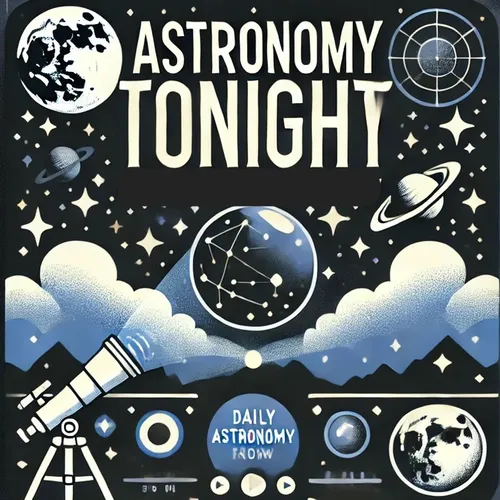Astronomy Tonight for - 11-03-2024
- Author
- Inception Point Ai
- Published
- Sun 03 Nov 2024
- Episode Link
- https://www.spreaker.com/episode/astronomy-tonight-for-11-03-2024--62595336
On November 3rd, 1957, the Soviet Union launched Sputnik 2 into orbit, marking a significant milestone in space exploration and the ongoing Space Race between the USSR and the United States. This mission was particularly noteworthy because it carried the first living creature to orbit Earth: a dog named Laika.
Laika, a stray dog from the streets of Moscow, became an unwitting pioneer in space travel. The Soviet scientists chose a stray because they believed such dogs would be more accustomed to harsh conditions. Laika was a small, calm dog, which made her ideal for the confined space of the satellite.
The spacecraft was a cone-shaped capsule about 4 feet in diameter at its base and about 3 feet high. It contained scientific instruments, a radio transmitter, and a cabin for Laika that was equipped with a temperature control system and enough food (in gelatin form) to last her seven days.
Unfortunately, the technology of the time wasn't advanced enough to bring Laika safely back to Earth. The mission was always intended to be one-way, with Laika's sacrifice deemed necessary for the advancement of space exploration.
The launch was successful, and Sputnik 2 entered Earth's orbit. However, the mission didn't go as smoothly as hoped. The thermal control system malfunctioned, and temperatures in Laika's cabin rose dramatically. It's now believed that Laika survived only a few hours in orbit due to overheating and stress, rather than the several days initially reported by the Soviets.
Sputnik 2 continued to orbit the Earth for 162 days before burning up upon re-entry into the Earth's atmosphere on April 14, 1958.
This mission provided valuable data about the effects of spaceflight on living creatures and paved the way for human spaceflight. However, it also sparked ethical debates about animal welfare in scientific research that continue to this day.
In a lighter vein, one might imagine Laika looking down at Earth, thinking, "I knew I should've chased that mailman instead of that stick!" Or perhaps, "When they said 'fetch,' I didn't think they meant the moon!"
Laika's journey into space remains a poignant moment in astronomical history, reminding us of the risks, sacrifices, and ethical considerations that come with pushing the boundaries of exploration.
This content was created in partnership and with the help of Artificial Intelligence AI
